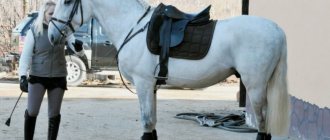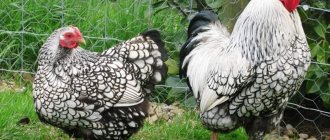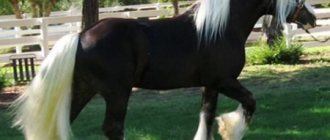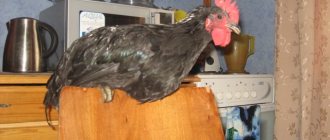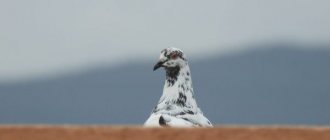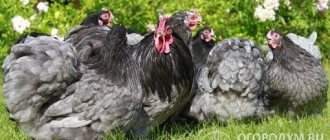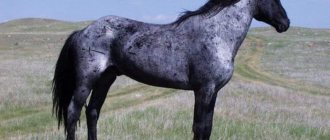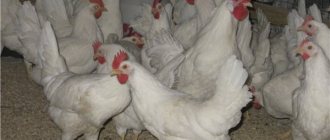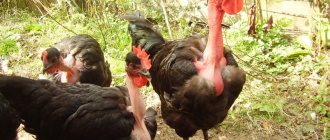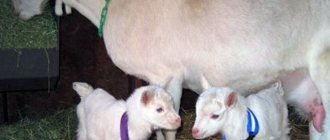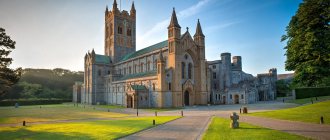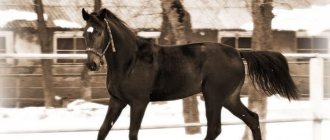The Spanish horse breed is a combination of grace, nobility and amazing intelligence. For many centuries, these animals were considered the most sought after throughout Europe. The importance of Spanish horses for horse breeding is difficult to overestimate: they were used in military operations, ceremonial parades, and now regularly take part in exhibitions and horse riding competitions. This versatility, combined with an attractive appearance, explains the high cost of horses.
Spanish horse breed
History of appearance
This breed got its name in honor of the southernmost historical region in Spain - Andalusia. The breed developed on the basis of local genetic material over several millennia. During this time, many peoples living on the territory of the Iberian Peninsula took an active part in improving the characteristics of local horses.
In addition to the fact that only the best horses were selected for selection, they were also crossed with Arabian, French and German horses. Already at the end of the Western European Middle Ages, the Andalusian horse breed was finally formed. In the 15th century, the breed became the most famous in Europe. Since then, the animals have become famous throughout the world.
Andalusians were not only actively bred outside the peninsula, but were also used to breed other breeds. Every European monarch had these horses. It was this breed of horse that was considered the best for cavalry.
At the beginning of the 18th century, the demand for horses declined sharply. This was influenced by several reasons:
- a large-scale epidemic in the 1830s – it put the breed at risk of extinction;
- during the Napoleonic occupation of Spain, the French stole almost the entire number of horses, which led to a significant decrease;
- new breeds appeared in Europe, which turned out to be more suitable for military conditions;
- The technical process that influenced battle tactics showed that the Andalusians and their main advantages were not necessary.
From then until the mid-20th century, Spanish horse breeding was in danger of collapse, and the survival of horses remained in question. Only after the Second World War did things begin to improve, and since 1962 the Spanish authorities gave the go-ahead for the sale of Andalusians abroad.
Exterior and character
The main purpose of animals is equestrian tourism, sports racing, and races at the hippodrome. The modern Andalusian horse is a domestic animal, although it is perfectly adapted to living in the wild. Horses surrounded by the care and attention of a person are able to become attached to him, which makes it difficult for them to survive in natural conditions.
The height of horses at the withers varies between 150-160 centimeters, weight - about 400 kilograms. The animal is predominantly gray, less often black, bay, and red. A distinctive feature of the horse is expressive almond-shaped eyes, small ears, and a prominent crest. The animal is dominated by a large neck with a smooth bend, a powerful skull, a hump nose, and long bangs. The Andalusian has a shiny, full mane. A massive body with a wide back and muscular shoulders, a rounded elastic belly, slightly shortened but strong legs with heavy hooves.
Due to a slight shift in the center of gravity to the hind legs, the front part is raised as much as possible - this helps the horse become more agile and graceful. The animal is distinguished by its high speed, which may make it seem that the Andalusian is not walking, but dancing.
The breed is considered good-natured; the horses have a calm disposition. They are obedient, kind and hardworking. They are easy to train and train. For these reasons, horses are often used for circus performances. Another advantage of the horse is its sharp mind, majesty and agility.
External characteristics
The Andalusian horse breed is distinguished by medium height, proportional body build with a compact, rounded body and a developed chest. Characteristics:
- height at the withers reaches 160 cm;
- the head is small, dry;
- almond-shaped eyes;
- profile with a small hump;
- the neck is long with a beautiful curve;
- the withers are dense and wide;
- the chest is deep with well-developed muscles;
- the body is round;
- limbs of medium length, thin, dry, graceful and correctly positioned;
- the back line is straight;
- the croup is rounded, shortened, raised;
- a long ponytail with thick hair is low-slung;
- luxurious mane;
- the hooves are strong.
The Andalusian horse is gray in 80% of cases. Less common are bay and dark bay colors. Black horses are very rare. The Portuguese breed line is presented in only two colors - bay or gray.
A distinctive feature of Spanish Andalusian horses is their high gait, which is given to them by nature. While running, the animals' forelimbs easily rise to the chest, creating the impression of flight.
Character
Andalusian horses have a submissive and kind disposition. They are easy to train, which allows them to be used in circus arts, bullfighting and some sports. Spanish thoroughbreds are able to unquestioningly obey the rider and respond to the movements of his body.
Attention! Andalusians are not without pride; they demand attention and respect.
Use of Andalusians
Today the breed is popular and in demand among breeders. English horses are the best at horse racing, but Andalusian horses are not surpassed by any breed in those types of equestrian sports where the important place is not the speed of completing the distance, but the accuracy of the exercises. For these reasons, Andalusians are bred for driving, show jumping, and dressage. In addition, just like 400 years ago, Andalusians demonstrate their skills well in parades and circus performances.
A striking example of how the Andalusian horse demonstrates its extraordinary skills is shown in the video. The animal does its job perfectly:
Thanks to their good disposition, obedience and intelligence, these horses have become so necessary for equestrian tourism. It is these characteristics that are considered the main ones for Spanish flu breeders. Great popularity throughout the world has made this breed numerous - there are about 200 thousand heads worldwide. At the same time, the main purebred livestock is located in Andalusia. The best horses in the world are bred at large stud farms and small breeding stables.
The Spaniards tend to require horses to be kept in strict conditions - this allows them to maintain the excellent endurance characteristics of the Andalusians. The Spaniards practically do not ride mares; they are simply kept in common herds. Only stallions are chosen for riding.
Horses of this breed are also used to staff mounted police units. It is these horses that are chosen to participate in bullfighting, because at the beginning of the fight, according to tradition, the animals must show their skills: agility and the ability to avoid injury from the horns of an angry bull.
Many heads of this breed are found in Portugal. Outside the Iberian Peninsula, Andalusians are actively bred in the USA, Brazil, Great Britain, Mexico, Italy, and the Netherlands. Horses can also be found in Russia, but due to the poor development of horse breeding in the country, their numbers are minimal.
Our days
Currently, this breed of horse is considered one of the most versatile and quite firmly takes its place in European horse breeding. Note that most often English horses with high speed take part in horse racing. Andalusians are successfully used in those sports in which speed is not so important as accuracy of execution, for example, in show jumping, trail riding, dressage (training), and driving. The Andalusian horse performs well in classical riding and western riding.
Animals of this breed take part in all important events in the country - various shows, national holidays, carnivals, parades, circus performances. Due to the fact that horses have a good disposition, they are obedient and flexible, and are always in demand in equestrian tourism. Often photographs of Andalusians can be seen on advertising posters. Such a national event as bullfighting is not complete without their participation. Please note: these animals get along better than others with representatives of other breeds and humans. All the positive qualities of these horses allow not only adults, but also children to work with them.
On the verge of extinction
At the beginning of the 19th century, there was a difficult period for Andalusian horses, the reason for this was that purebred English and Anglo-Arab horses were popular and in demand. In Spain, a stud book was established in 1912, and the Andalusians were called “purebred Spanish horses.”
After this, Spanish breeders did a great job of purifying the breed from the impurities of Arabian horses. In 1960, a stud book was also created in Portugal, where the Andalusians were called “purebred Lusitanian horses.” In fact, both purebred horses are one breed, called Andalusian or Iberian.
Application
The animals have proven themselves well in various equestrian disciplines - eventing, show jumping, dressage. Spanish horses have repeatedly become participants in amateur and professional competitions - the tricks of these horses are a bright, unforgettable spectacle. They are no less good at simple horseback riding.
Thanks to their elegance and beauty, horses are suitable for ceremonial parades and exhibitions. And in Spain they are used in military training and traditional local entertainment - bullfighting, to “check the readiness” of bulls.
Reference. Despite their high performance characteristics, animals are not used in agriculture, since not everyone can afford such a horse.
Content
An important factor when keeping an Andalusian horse is its habitat and diet. A stable is a room where animals are kept, separated from each other by partitions. The Andalusian is a freedom-loving horse, so it is best to keep him in a stall (a room where one pet is kept).
In this case, it is important that the stall has an individual stall for each horse. The area of the room must be at least 9 square meters, height - from 3 meters. The stall should have doors that swing outward; high-quality ventilation unit. A waterproof cold floor is built in the room, which is covered with straw and peat. It is equally important to add a forge, a catering unit with food, and a storage room for storing equipment.
Andalusians need constant walking in the fresh air, for this reason it is advisable to equip paddocks - these are spacious outdoor premises for keeping animals. But grazing requires a fenced clearing or meadow.
Andalusian horse "Schleich"
The German company Schleich has been producing fairly realistic figurines of various animals, popular heroes, magical characters and accessories for 70 years. Each figurine is made from high-quality safe material and painted by hand. Interestingly, in order to achieve greater similarity, the company has been collaborating for a long time with the Berlin Zoo and zoological museums. The company also produces figurines of Andalusian horses.
They are made of rubber plastic, odorless and completely non-toxic. Durable and safe paint is used for painting. The animals have amazing precision and look very realistic. It should be noted that Schleich figurines introduce children to the world of animals and can become a real decoration for any collection!
Care and nutrition
With proper care and a balanced diet, a purebred animal will live more than 25 years. Caring for horses involves regular veterinary examinations, minimal physical activity, and cleaning.
Nutrition
The daily diet for an Andalusian must be based on carrots, potatoes, beets, and apples. You can’t do without oats, hay and straw, wheat and rye, and legumes. Animals need clean water.
It is important to give your horse water to drink before each meal. In summer, one individual needs 50 liters of fresh water; in winter, up to 30 liters are enough for a horse. Horses are fed frequently and in small quantities. Overeating can cause animals to suffer from stomach or intestinal colic, and if there is an excess of calories, digestion is impaired.
It is strictly forbidden to feed horses before physical activity. The diet should be varied - it is based on juicy and satisfying food containing fiber, vitamins, proteins, and minerals. When feeding dry food, 100 kilograms of horse weight require 2-3 kilos of feed. For young horses, the daily norm is increased by 15-20%.
Horseshoe
Andalusian horses only have their front hooves shod; exclusively light material is used for these purposes. Horses that participate in races and races have their four legs shod using durable material.
Changing horseshoes is a mandatory process - they are changed every 30-40 days or immediately after cracks are detected. It is advisable that the owner of the horses once a year allows his pets to take a little rest from the horseshoes - the animals are released onto the soft grass “barefoot”.
Replacing a horseshoe is carried out according to the following scheme:
- Inspect the hooves and make sure they are free of any damage. The slightest scratch can cause horses to experience serious inflammation.
- Carefully remove the old shoe so as not to damage the horse's leg.
- Remove dirt, dust, rough tissue, and foreign particles from the horseshoe.
- Treat the lower part of the legs with a disinfectant and leave the animal for 15-20 minutes.
- Select suitable horseshoes, cool them and attach them, starting from the front legs.
Cleaning
With regular cleaning, you can achieve good health of your horse. In addition, this process is necessary to ensure that the animal is clean, its mane and fur look shiny and silky. Horses are cleaned daily; for this purpose, certain recommendations are followed:
- Due to the fact that Andalusians are considered calm horses, there is no need to tether them. But during cleaning you cannot do without outside help: one person holds the animal, the other cleans it.
- The beginning of cleaning consists of an important stage - cleansing the hooves of dirt, stones, sand, and stuck grass. Particular attention is paid to the arrow of the leg - a sensitive V-shaped place.
- Using a rubber scraper, go through the fur to remove dust, dirt, excess particles and pieces of plants. The scraper is worked in a circle against the growth of the wool. The legs, spine and bones are not scraped; this is done from the neck to the stomach, then to the sacrum.
- From the neck to the tail, cleaning is carried out with a stiff brush - this helps remove excess hair and parts that remain after cleaning with a scraper.
- Cleaning the face, ears and back is done with a soft brush. It is carried out over areas of the body where there is short hair.
- Wipe your face, ears and nose with a damp cloth.
- The mane is combed with a special comb, and the horse’s tail is combed with another brush to remove any remaining dirt and other foreign parts.
It is important to use different brushes and combs for each part of the body. This process seems difficult, but in fact it is only at first glance. Already the second cleaning of the animal will be simple and quick.
Lifestyle in nature
In order to find an approach to such a horse and make friends with it, you need to know its character and habits, what requirements it makes for its maintenance and care, and also what is the best way to feed such a nice horse.
Character and habits
The main advantage of such an animal is hard work, good disposition and obedience. Such horses readily and even with a certain passion lend themselves to training, which is why they have been used in circus art for many years. Andalusian horses are so quick in their movements, precise and at the same time graceful, that they do not allow the royal characteristics and trends of those times to be lost in existence. And a sober and quick mind helps a horse always make the right decisions; in fights and battles, such horses helped knights win.
At the same time, the Andalusian horse is very proud in character, maintaining sensitivity in contacts with humans, and displays intelligence and manners. Proper care is accompanied by a sensitive and responsive attitude towards its owner.
Maintenance and care
Due to the fact that in their native areas Andalusian horses live in harsh living conditions and are kept on open pastures all year round, today such horses are unpretentious and characterized by good health. But, despite this, horses must still have veterinary supervision and all scheduled vaccinations.
Since the horse has a voluminous and long tail and mane, they require supervision of their condition. They are usually trimmed to avoid tangling, braided regularly, and washed twice a week with conditioner. Like all horses, Andalusians need to keep their nostrils clear of moisture and debris to prevent infection. Hooves require regular inspection, since their integrity and health are responsible for the mobility and performance of the animal.
Nutrition
The lifestyle of Spanish horses left an imprint on their diet. The Andalusian horse needs fresh vegetation; in winter it is replaced with hay. You can also dilute your diet with vegetables and cereals, be it oats and wheat, potatoes, beets and carrots. In addition, the horse must be watered with clean water. Since Andalusian horses are used for riding purposes, they need to be periodically fed with valuable concentrates containing vitamins and minerals. The horse does not show any special preferences in food; like all representatives of this type of animal, they love sugar.
Where to buy and how much does it cost?
Purchasing a thoroughbred horse is a decision that must be made consciously. Before purchasing, it is important to provide comfortable living conditions, care, adequate nutrition, attention and care. Many purchases of horses of this breed cannot be done without intermediaries. They buy animals directly from their homeland – Spain. This guarantees that you will receive a purebred horse with a pedigree.
Purchasing horses is possible in several ways:
- At a specialized stud farm. This method is considered the most reliable. In this case, the animals are regularly examined by veterinarians who vaccinate the horses on time. The expert will be able to accurately describe the habits, character, and habits of the horse offered for sale. An additional advantage is the availability of awards for sports or other merits. A distinctive feature of the stud farm is the provision of purebred pedigree.
- At horse shows. This place is considered one of the best for buying a breeding horse. Only the best horses are presented here. High competition among owners contributes to the assessment of all qualities of stallions, and also provides an opportunity to bargain.
- From private breeders. These are resellers who usually sell horses at exorbitant prices. The advantage of buying a horse from private breeders is that they may have rare varieties of the Spanish stock. It is important to understand that buying from a private owner is a big risk, because there is a possibility of falling into a fraudster’s scam.
- In sports and equestrian clubs. Such establishments specialize in keeping, raising and preparing horses for racing. They do not sell horses, but among their visitors you can find a trusted seller.
Regarding the cost of an Andalusian horse, it depends on age, appearance, health, genealogical line and level of training. “Spanish girls” aged 2-3 years cost from 8 to 15 thousand euros. Horses that are 4-5 years old will cost 15-25 thousand euros, 6-8 years old – 25-35 thousand euros. Professionally trained horses can cost from 16 to 70 thousand euros.
Price
How much does an Andalusian horse cost? This directly depends on the age of the animal and the level of preparation and training. To get an idea, let's give an example. A two- or three-year-old horse with a standard level of training can cost from 8,000 to 18,000 euros. Please note: you can also buy an Andalusian from a family with a rich history, thanks to the fact that the Spanish government is diligently developing and preserving the breed. An animal aged three to four years, which has training skills, will cost the buyer from 15,000 to 25,000 euros. The price depends on the conditions in which the horse grew up and where the horse was bred. However, if an Andalusian horse took part in various competitions or competitions and took prizes, it will cost over 25,000 euros.
Breeding
Andalusians are considered versatile and capable of performing any job that is usually assigned to domestic horses today. But taking into account the fact that the price of breeding animals is high, breeding them solely for the sake of meat and milk is great stupidity.
It also makes no sense to breed animals of this breed if you need a horse to participate in races or use it to pull carts. For racing today, preference is given to the English riding horse, and for transporting goods, cheaper horses without a breed are chosen.
It is advisable to breed Andalusians for equestrian competitions (jumping, driving or dressage). Animals are intelligent, prone to learning, dexterous and obedient. This breed performed well in recreational horseback riding. It is best to breed horses for further sale to home stables or travel companies whose specialization is equestrian tourism.
Due to the fact that horse breeding in Russia is very poorly developed, and the costs of breeding thoroughbred horses are quite high, such a business cannot be called profitable. Even in the field of livestock farming, it will be possible to find many more profitable and promising areas than breeding pedigree horses.
Black Andalusian horse
It is best to breed horses only if you have a strong desire for these animals. But even in this case, the stable should not be the main source of income, especially since the business will be unprofitable for the first few years. And in the future it may not be possible to make sufficient profit from such a business.
Summarizing
Andalusian horses adopted the main features of the exterior from their eastern ancestors. The breed gained great popularity during the Baroque period. Only the Frisians can compare in ease with the Andalusians. A distinctive feature of the breed is its unusual gait.
A characteristic feature of representatives of the species is their energetic, hot and at the same time flexible disposition. Horses can be trained very quickly and are used in all kinds of equestrian sports, which involve performing combinations of the most complex elements.
Breeding the breed in our territories is difficult due to the origin of the species. Animals are accustomed to living in warm regions, so the room for keeping them must be well insulated. When walking in frosty weather, horses must be covered with waterproof blankets. Representatives of the species are often susceptible to skin diseases and also suffer from hoof problems.
An important aspect in keeping animals is a balanced diet. Due to the fact that Andalusian food on wild pastures is low in sugar, at home owners often have problems with feeding. Horses often exhibit sugar intolerance, which looks like skin irritation and inflammation of the hooves. It is difficult to find more beautiful horses than the Spaniards. They are distinguished by their chic manes and majestic posture. The body is lean, with a raised compact croup on strong, graceful limbs.
Interesting Facts
There are many interesting facts about the Andalusian horse. Below are some of them:
- Many legends and superstitions have been invented about the color of the Andalusian horse. It was believed that a horse that did not have white markings and curls was unlucky and had a bad reputation. A horse with white spots was considered kind and flexible. If there were curls on the body that the animal could not see, it was a bad sign.
- For more than a century, the breed was bred in Spain. The export of its representatives abroad was not permitted. The animals were protected by the monks - they did not allow the crossing of purebred horses with other breeds.
- Andalusian horses were the best in knightly battles and battles - with their help, riders always remained in the role of winners. Such military glory made the “Spanish girls” popular, which is why the great artists of the Renaissance painted pictures exclusively with this breed.
- The horse's high stride makes its gait slightly “dancing.” During the trot, the horse is able to easily throw back its front legs all the way to its chest.
The Andalusian horse breed is considered the most famous in Spain. She has managed to gain popularity among many breeders, because she is famous not only for her attractive external characteristics, but also for her physical characteristics. Today it is profitable to breed horses only abroad.
0
0
Copy link
Brief description of the breed
The past of Andalusian horses is so fascinating that you can safely make a film.
A horse with a narrow long head on a strong neck, the animal’s limbs are of medium length and can support a presentable croup. The horse's distinctive features are its low tail and luxurious mane.
The most noble representatives of this breed in ancient times carried royal families, leading parades, and helped knights win fights and battles. The Renaissance gave rise to more than one famous painting depicting Andalusian horses.
The color of the horse is predominantly gray; less often you can see a horse of a dark brown color. The animal has a rounded massive body and a wide, strong chest. Due to this, they are often compared to Arabian thoroughbred horses. A clearly defined crest sets the horse apart from other breeds.
The ancestors of Andalusian horses conquered the fields of the Iberian Peninsula, as indicated in history back in the Paleolithic era. This was confirmed by the found rock paintings with horses that clearly had a specific profile with a noticeable humped nose. In that era, the tribes and peoples of those areas were called Iberians, hence the first name of the breed - Iberian.
Over time, close contacts between Spain and North American horse breeders led to the crossing of the then Iberian horse with the Numidian horse. Further, the blood of the resulting horses was mixed with the ancient Arabian horses, due to the invasions of this people.
Further, the selection of horses did not stop there; after a while, Iberian horses were crossed with the Barbary horse breed (a horse obtained from the fusion of Arabian and Numidian breeds). Thus, we can say that the main credit for the selection of the Andalusian breed goes to the Carthusian monks. It was their work that gave birth to a horse that incorporated in its qualities the skills of the European heavy and southern light horses.
